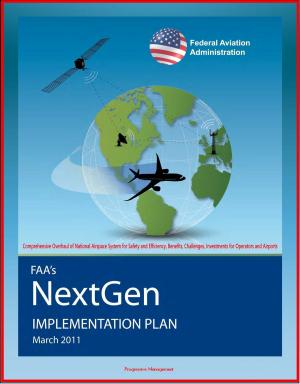2016 National Network of Fusion Centers: Final Report July 2017 - Fusion Center Profiles and Full List, Partner Agency Data, Staff and Analysts, Governance Structure and Membership, Operational Costs
Nonfiction, Social & Cultural Studies, Political Science, Politics, Law Enforcement| Author: | Progressive Management | ISBN: | 9780463308998 |
| Publisher: | Progressive Management | Publication: | June 10, 2018 |
| Imprint: | Smashwords Edition | Language: | English |
| Author: | Progressive Management |
| ISBN: | 9780463308998 |
| Publisher: | Progressive Management |
| Publication: | June 10, 2018 |
| Imprint: | Smashwords Edition |
| Language: | English |
This report has been professionally converted for accurate flowing-text e-book format reproduction.
The Department of Homeland Security (DHS) conducts the annual fusion center assessment to provide a comprehensive picture of the performance of the National Network of Fusion Centers (National Network), help measure the effectiveness of Federal Emergency Management Agency (FEMA) grant funding, and guide partners to invest in mission areas with the greatest potential benefit to the entire homeland. The assessment primarily evaluates fusion centers' achievement of selected performance measures. It also strives to ensure functional consistency across the National Network, regardless of fusion center size, scope, geography, or mission.
As a result of the steady progress since 2011, the 2015 fusion center assessment concluded that the National Network had reached maturity. The 2015 report closed-out the former measures focused on the National Network's achievement of critical operational and enabling capabilities. This year's 2016 National Network of Fusion Centers Final Report (2016 Final Report) reflects this change through a focus on performance measures developed by a DHS-led working group of fusion center directors.
The key findings, conclusions, and recommendations in this 2016 Final Report center on: the need for a shared understanding of critical fusion center functions; the importance of aligning staffing, training, and collaboration with key fusion center focus areas; the need for training, transition procedures, and onboarding materials to enhance skills and maintain continuity for new and existing staff; the restrictions that state and local laws and policies impose on many fusion centers in sharing analytical products on the Homeland Security Information Network-Intelligence Community of Interest (HSIN-Intel) and elsewhere; and the opportunity to convert increased fusion center colocation and law enforcement focus into outcomes that more fully address partner needs. See "Key Findings, Conclusions, and Recommendations."
This report has been professionally converted for accurate flowing-text e-book format reproduction.
The Department of Homeland Security (DHS) conducts the annual fusion center assessment to provide a comprehensive picture of the performance of the National Network of Fusion Centers (National Network), help measure the effectiveness of Federal Emergency Management Agency (FEMA) grant funding, and guide partners to invest in mission areas with the greatest potential benefit to the entire homeland. The assessment primarily evaluates fusion centers' achievement of selected performance measures. It also strives to ensure functional consistency across the National Network, regardless of fusion center size, scope, geography, or mission.
As a result of the steady progress since 2011, the 2015 fusion center assessment concluded that the National Network had reached maturity. The 2015 report closed-out the former measures focused on the National Network's achievement of critical operational and enabling capabilities. This year's 2016 National Network of Fusion Centers Final Report (2016 Final Report) reflects this change through a focus on performance measures developed by a DHS-led working group of fusion center directors.
The key findings, conclusions, and recommendations in this 2016 Final Report center on: the need for a shared understanding of critical fusion center functions; the importance of aligning staffing, training, and collaboration with key fusion center focus areas; the need for training, transition procedures, and onboarding materials to enhance skills and maintain continuity for new and existing staff; the restrictions that state and local laws and policies impose on many fusion centers in sharing analytical products on the Homeland Security Information Network-Intelligence Community of Interest (HSIN-Intel) and elsewhere; and the opportunity to convert increased fusion center colocation and law enforcement focus into outcomes that more fully address partner needs. See "Key Findings, Conclusions, and Recommendations."















